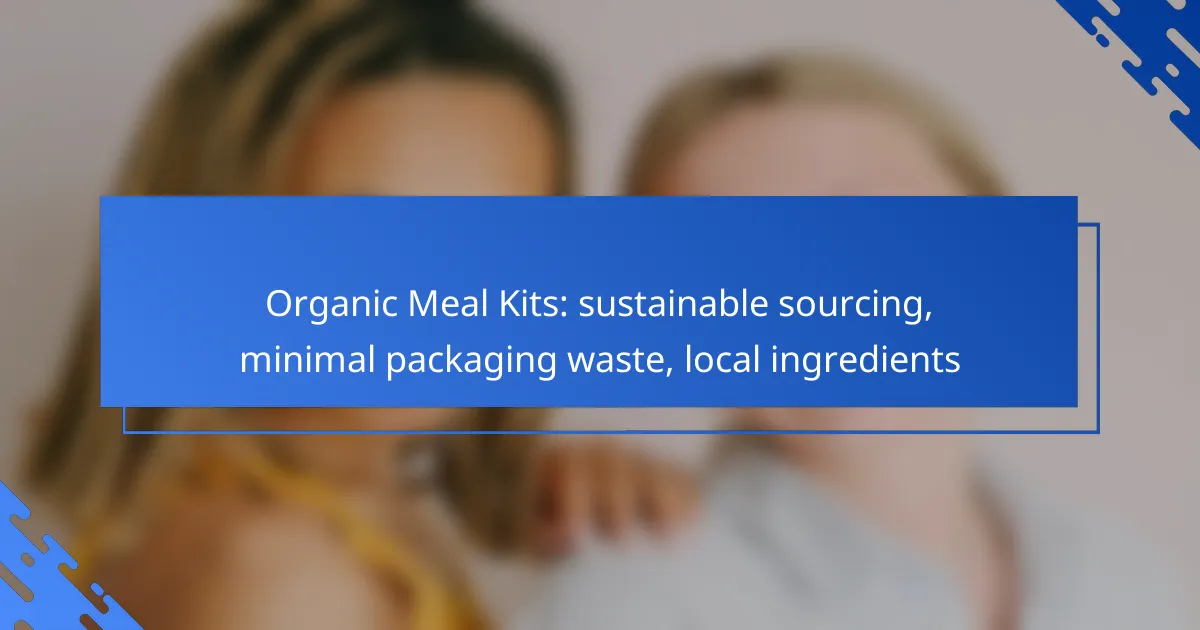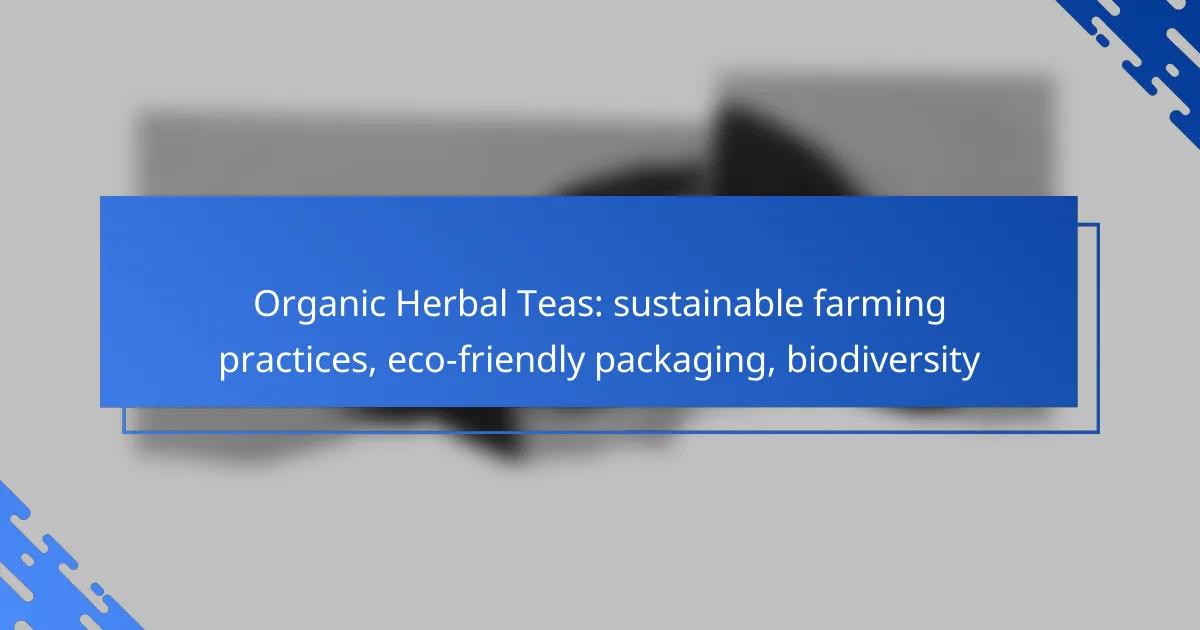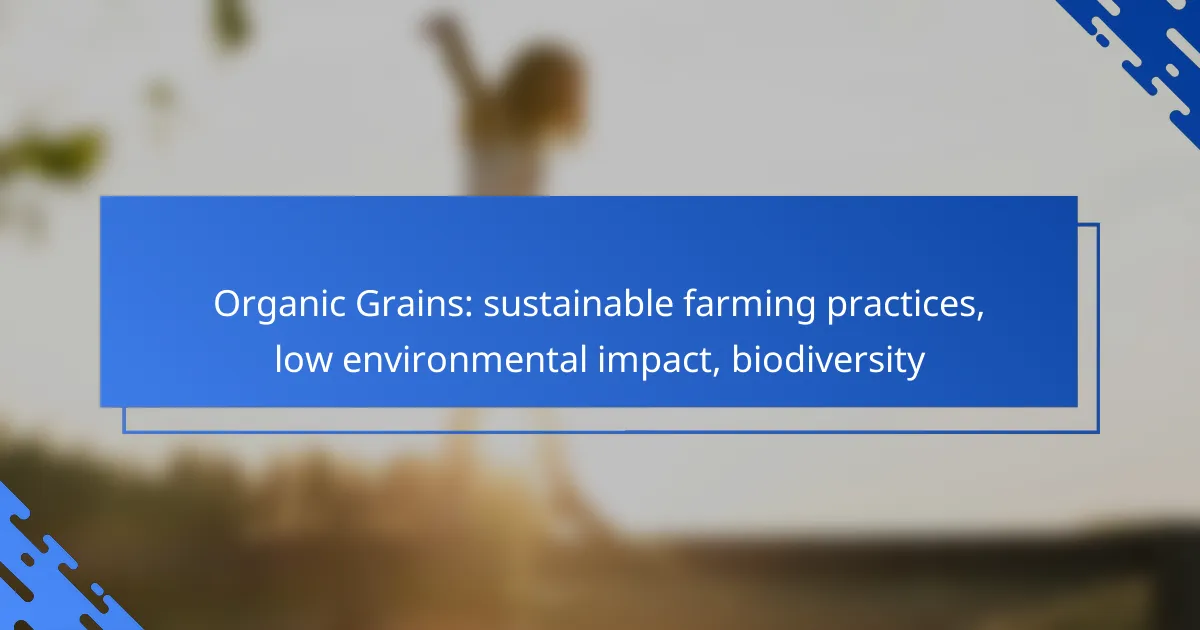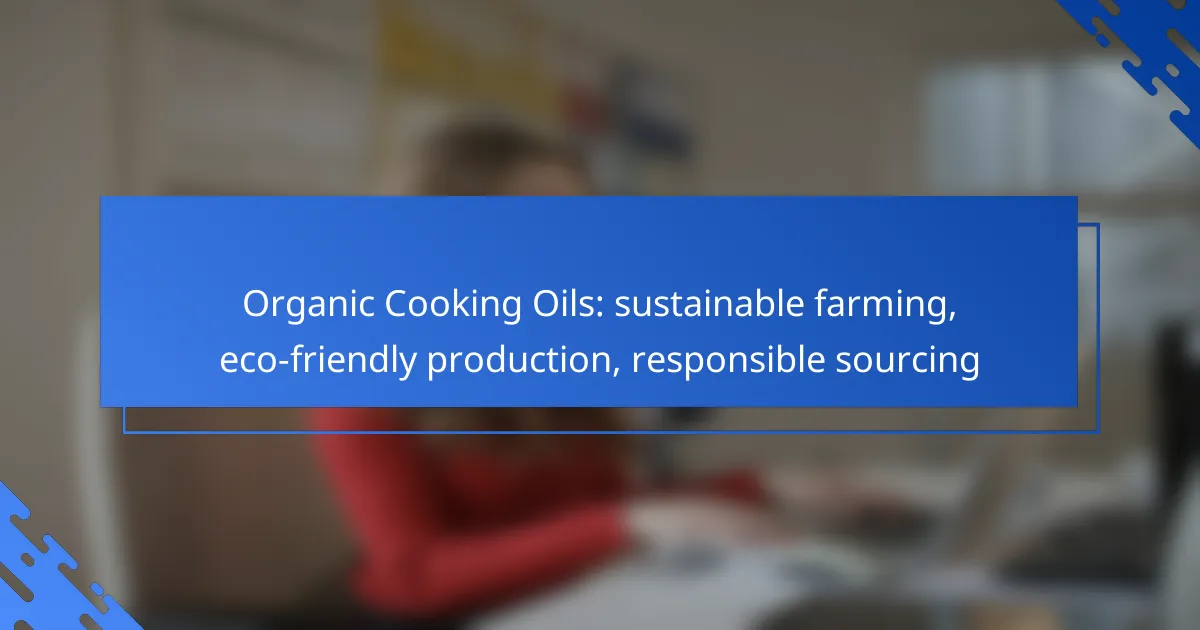Organic meal kits are designed with sustainability in mind, emphasizing the use of locally sourced ingredients that support nearby farmers and reduce transportation emissions. By prioritizing minimal packaging waste, these kits significantly lessen their environmental impact, contributing to a healthier planet. This approach not only fosters community engagement but also ensures that consumers enjoy fresh, seasonal produce while making eco-conscious choices.

How do organic meal kits promote sustainable sourcing?
Organic meal kits promote sustainable sourcing by prioritizing ingredients that are grown and harvested in environmentally friendly ways. This approach not only supports local economies but also reduces the carbon footprint associated with transporting food over long distances.
Use of local farms
Many organic meal kits source their ingredients from local farms, which helps to strengthen community ties and supports regional agriculture. By working with nearby producers, these kits minimize transportation emissions and ensure fresher ingredients.
Choosing meal kits that emphasize local sourcing can also lead to a more diverse diet, as they often include unique seasonal offerings that reflect the region’s agricultural strengths.
Seasonal ingredient selection
Organic meal kits often focus on seasonal ingredients, which are harvested at their peak freshness and flavor. This practice not only enhances the taste of the meals but also reduces the need for energy-intensive greenhouse production.
By selecting seasonal produce, meal kits can help consumers learn about and appreciate the natural growing cycles of various foods, encouraging a more sustainable eating pattern.
Partnerships with sustainable brands
Many organic meal kits partner with brands that prioritize sustainability, such as those using eco-friendly packaging or practicing regenerative agriculture. These partnerships ensure that the entire supply chain adheres to environmentally responsible practices.
When selecting a meal kit, look for those that highlight their collaborations with certified sustainable brands, as this can enhance the overall impact of your food choices.
Transparency in sourcing
Transparency in sourcing is a key feature of many organic meal kits, allowing consumers to understand where their food comes from and how it is produced. This openness builds trust and encourages informed purchasing decisions.
Meal kits that provide detailed information about their sourcing practices, including farm locations and production methods, empower consumers to support sustainable agriculture actively.

What are the benefits of minimal packaging waste in meal kits?
Minimal packaging waste in meal kits significantly reduces environmental impact and promotes sustainability. By utilizing less packaging, meal kit services can help decrease landfill contributions and lower carbon footprints associated with production and transportation.
Reduction of environmental impact
Reducing packaging waste directly contributes to lower environmental harm. Less packaging means fewer resources are used in production, which can lead to decreased energy consumption and reduced greenhouse gas emissions. This approach aligns with sustainable practices that prioritize eco-friendly sourcing and waste management.
Meal kits that focus on minimal packaging often use recyclable or compostable materials, further enhancing their sustainability. Consumers can play a role by properly disposing of or recycling packaging, thus supporting a circular economy.
Cost savings for consumers
Minimal packaging can lead to cost savings for consumers. When companies reduce packaging waste, they often pass on these savings in the form of lower prices for meal kits. This can make organic and sustainably sourced ingredients more accessible to a broader audience.
Additionally, reduced packaging can mean fewer shipping costs, as lighter and more compact packages are easier to transport. This can be particularly beneficial for consumers in urban areas where delivery fees may vary based on package weight.
Innovative packaging solutions
Meal kit companies are increasingly adopting innovative packaging solutions that minimize waste while maintaining food safety. Examples include reusable containers, biodegradable materials, and smart designs that optimize space and reduce excess. These solutions not only protect the ingredients but also appeal to environmentally conscious consumers.
Some companies are experimenting with edible packaging or concentrated ingredients that require less packaging overall. By staying informed about these innovations, consumers can choose meal kits that align with their values and contribute to a more sustainable food system.

Which meal kit services prioritize local ingredients?
Meal kit services that prioritize local ingredients focus on sourcing produce and proteins from nearby farms and suppliers, reducing transportation emissions and supporting local economies. These services often highlight seasonal offerings and may provide information about the origins of their ingredients.
Sun Basket
Sun Basket emphasizes organic and clean ingredients, sourcing many of their products from local farms. They offer a variety of meal plans, including options for specific dietary needs, ensuring that customers can enjoy fresh, seasonal produce.
When selecting a meal kit from Sun Basket, look for their “Local” label, which indicates ingredients sourced from nearby farms. This not only supports local agriculture but also enhances flavor and freshness.
Green Chef
Green Chef focuses on USDA-certified organic ingredients and often partners with local farms to provide fresh produce. Their meals cater to various dietary preferences, including keto, paleo, and balanced eating.
To make the most of Green Chef’s offerings, consider their rotating menu that highlights seasonal ingredients. This approach ensures that you receive meals made with the freshest local produce available.
Fresh n’ Lean
Fresh n’ Lean specializes in organic meal delivery, with a strong commitment to sourcing local ingredients whenever possible. Their meals are prepared fresh and delivered weekly, emphasizing health and sustainability.
For those interested in Fresh n’ Lean, their focus on local sourcing means that you can enjoy meals that not only taste great but also support local farmers. Check their website for details on ingredient sourcing and seasonal menus to maximize your experience.

How do organic meal kits compare in pricing?
Organic meal kits typically range from moderate to high price points, depending on factors like ingredients, portion sizes, and delivery options. While they may be more expensive than traditional grocery shopping, many consumers find the convenience and quality justifies the cost.
Cost per serving analysis
The cost per serving for organic meal kits usually falls between $8 to $12, depending on the brand and recipe complexity. This pricing often reflects the quality of organic ingredients and the convenience of pre-portioned meals. When comparing meal kits, consider the number of servings provided and the overall value based on ingredient quality.
Some companies offer family-sized portions that can reduce the cost per serving, making it more economical for larger households. Always check if the kit includes extras like sauces or spices, as these can influence the total cost.
Subscription vs. one-time purchase
Subscriptions for organic meal kits often provide a discount, typically around 10% to 20% off the regular price. Committing to a subscription can lead to savings over time, especially if you plan to use meal kits regularly. However, one-time purchases allow for flexibility, which is ideal for those who want to try different options without long-term commitment.
Evaluate your cooking habits and budget when deciding between subscription and one-time purchases. If you prefer variety and spontaneity, a one-time purchase might suit you better, while a subscription can streamline meal planning for busy schedules.
Discounts for local delivery
Many organic meal kit services offer discounts for local delivery, which can significantly lower overall costs. These discounts can range from a few dollars off per order to waived delivery fees, making it more affordable to enjoy fresh, local ingredients.
Check if your chosen meal kit service has partnerships with local farms or suppliers, as this can enhance the freshness of ingredients while supporting local economies. Always look for promotional codes or seasonal offers that may apply to local deliveries, as these can provide additional savings.

What criteria should you consider when choosing a meal kit?
When selecting a meal kit, prioritize sustainable sourcing, minimal packaging waste, and the use of local ingredients. These factors not only enhance the quality of your meals but also support environmentally friendly practices and local economies.
Ingredient sourcing practices
Ingredient sourcing practices refer to how and where the meal kit company obtains its food items. Look for companies that prioritize organic, non-GMO, and locally sourced ingredients, as these options tend to have a lower environmental impact and support local farmers.
Many meal kit services provide transparency about their sourcing methods. Check for certifications such as USDA Organic or Fair Trade, which indicate adherence to specific environmental and ethical standards. A good practice is to choose kits that highlight seasonal produce, as this often means fresher ingredients and reduced transportation emissions.
Additionally, consider the company’s commitment to sustainable farming practices. For example, some brands partner with farms that use regenerative agriculture techniques, which can improve soil health and biodiversity. Researching these practices can help you make a more informed choice.










